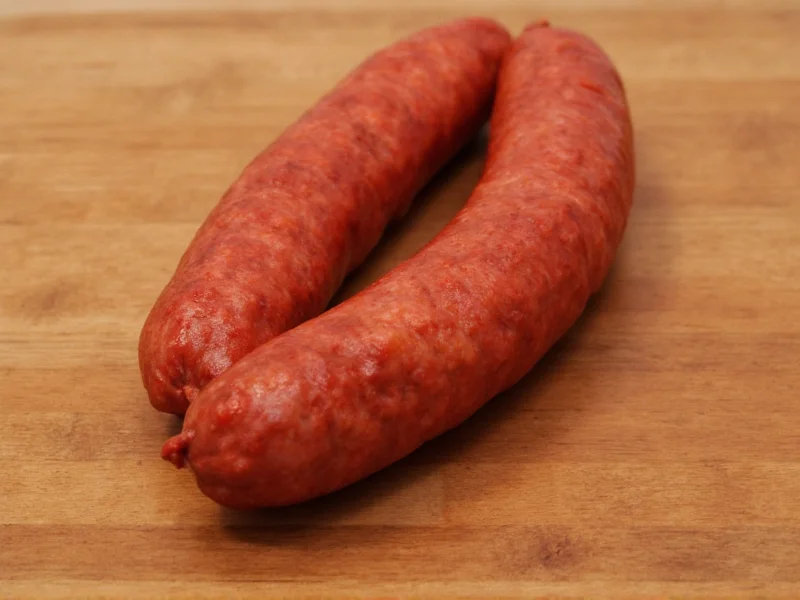Longanisa represents one of the most beloved culinary traditions in the Philippines, embodying the country's rich cultural fusion of indigenous, Spanish, and Asian influences. This distinctive sausage has evolved into dozens of regional variations, each reflecting local tastes and ingredients while maintaining core characteristics that define authentic longanisa.
Understanding Longanisa's Cultural Significance
The term "longanisa" derives from the Spanish "longaniza," but Filipino longanisa has developed its own identity separate from its Iberian ancestor. Introduced during the Spanish colonial period, this sausage transformed through local adaptation, incorporating native ingredients and cooking techniques. Unlike Spanish chorizo which is typically cured and smoked, most Filipino longanisa remains fresh and requires cooking before consumption.
Longanisa holds special significance in Filipino food culture, particularly as a breakfast centerpiece. The classic "longsilog" meal—combining longanisa with garlic fried rice (sinangag) and fried egg (itlog)—represents a beloved morning tradition across the archipelago. This sausage's versatility extends beyond breakfast, featuring in various Filipino dishes from pasta adaptations to party snacks.
Key Characteristics of Authentic Longanisa
What distinguishes genuine longanisa from other sausages? Three elements define authentic Filipino longanisa:
- Sweetness profile - Most varieties incorporate sugar, muscovado, or even pineapple juice
- Garlic intensity - Generous amounts of fresh garlic form the flavor foundation
- Vinegar component - Provides tanginess and acts as a natural preservative
The meat-to-fat ratio typically ranges from 70:30 to 80:20, ensuring juicy results when cooked properly. Natural casings (usually hog casings) remain traditional, though some modern versions use collagen casings for convenience.
Regional Variations Across the Philippines
The Philippines' diverse regions have developed distinctive longanisa styles. Understanding these differences helps appreciate the sausage's culinary diversity:
| Region | Style Name | Distinctive Features | Sweetness Level |
|---|---|---|---|
| Luzon (Northern) | Vigan longanisa | Thin, coiled shape; uses native "panocha" sugar | High |
| Luzon (Southern) | Lucban longanisa | Garlicky; uses annatto for color; coarsely ground | Medium |
| Visayas | Pampanga longanisa | Balanced sweet-savory; often includes liver spread | Medium-High |
| Mindanao | Cebu longganisa | Distinctive "hamonado" sweet style | High |
These regional differences reflect local agricultural products and historical influences. For example, Vigan's sweet style developed from the abundant sugarcane production in Ilocos Sur, while Lucban's garlic-forward version showcases Quezon province's renowned garlic cultivation.
Longanisa vs. Chorizo: Understanding the Differences
Many confuse Filipino longanisa with Spanish chorizo, but key distinctions exist:
- Preparation method - Longanisa is typically fresh and requires cooking; Spanish chorizo is usually cured and can be eaten without cooking
- Sweetness factor - Filipino versions incorporate significant sweetness; Spanish chorizo emphasizes paprika and smoked flavors
- Garlic usage - Longanisa features prominent fresh garlic; Spanish chorizo uses minimal garlic
- Vinegar inclusion - Vinegar is standard in longanisa; rare in traditional Spanish chorizo
When shopping for authentic longanisa sausage, look for these distinguishing characteristics rather than assuming any pork sausage labeled "chorizo" qualifies as true Filipino longanisa.
How to Cook Longanisa Properly
Proper preparation ensures optimal flavor and texture from your longanisa sausage. Unlike pre-cooked sausages, authentic Filipino longanisa requires specific cooking techniques:
- Water poaching method - Place sausages in a skillet with ½ inch of water, cover, and simmer until water evaporates (about 10-12 minutes)
- Finish frying - Once water evaporates, continue frying in its own fat until golden brown (3-5 minutes)
- Don't pierce - Avoid puncturing the casing to retain juices
- Low heat - Cook over medium-low to prevent burning the sugar content
This two-stage cooking process ensures thorough cooking while preventing the sugar from burning. The water poaching step cooks the sausage through without charring the exterior, while the final frying develops the characteristic caramelized crust.
Popular Longanisa Dishes and Recipe Ideas
Beyond the classic longsilog breakfast combination, longanisa features in numerous Filipino dishes:
- Longanisa pasta - Sliced longanisa with garlic, tomatoes, and parmesan creates a Filipino-Italian fusion
- Sinugba - Grilled longanisa skewers often served as pulutan (beer snacks)
- Longanisa fried rice - Adds savory-sweet notes to leftover rice
- Embutido - Longanisa serves as the flavorful center of this Filipino meatloaf
- Longanisa pizza - Modern fusion topping combining sweet sausage with cheese
For home cooks exploring traditional Filipino longanisa recipes, start with the simplest preparation: pan-fried longanisa served with sinangag (garlic fried rice) and itlog (fried egg). This authentic longanisa breakfast combination showcases the sausage's distinctive flavor profile without overwhelming its unique characteristics.
Finding Authentic Longanisa
Locating genuine longanisa sausage depends on your location:
- In the Philippines - Visit local "talipapas" (wet markets) where butchers often prepare regional varieties daily
- In Filipino communities abroad - Look for Asian or Filipino grocery stores with fresh meat sections
- Online retailers - Several specialty food websites ship frozen authentic longanisa
- Homemade option - Making longanisa allows customization of sweetness and garlic levels
When selecting longanisa, check for visible garlic pieces in the meat mixture and avoid products listing artificial flavors or excessive preservatives. Fresh longanisa should have a pinkish hue with visible garlic and fat distribution.
Storage and Handling Guidelines
Proper storage maintains longanisa's quality and safety:
- Refrigeration - Fresh longanisa lasts 3-4 days in the coldest part of the refrigerator
- Freezing - Wrap tightly and freeze for up to 3 months (thaw in refrigerator before cooking)
- Signs of spoilage - Discard if color turns grayish or develops sour odor
- Cooked storage - Refrigerate leftovers within 2 hours; consume within 3 days
Unlike cured sausages, fresh longanisa requires careful temperature control. Never leave uncooked longanisa at room temperature for more than two hours to prevent bacterial growth.











 浙公网安备
33010002000092号
浙公网安备
33010002000092号 浙B2-20120091-4
浙B2-20120091-4